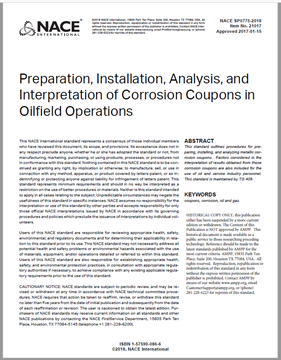Search
09563 CO2 Corrosion Inhibition and Oil Wetting of Carbon Steel With Ferric Corrosion Products
Also Purchased
SP0775-2018 "Preparation, Installation, Analysis, and Interpretation of Corrosion Coupons in Oilfield Operations"
Product Number:
21017-SG
Publication Date:
2018
$179.00
TM0497-2018, Measurement Techniques Related to Criteria for Cathodic Protection on Underground or Submerged Metallic Piping Systems
Product Number:
21231-SG
Publication Date:
2018
$179.00
NACE Publication 35103-2003-SG, External Stress Corrosion Cracking of Underground Pipelines
Product Number:
24221-SG
ISBN:
35103
$109.00




